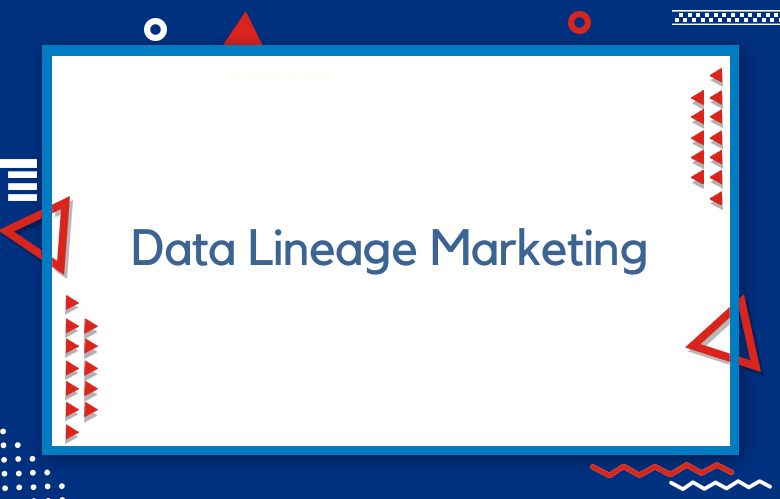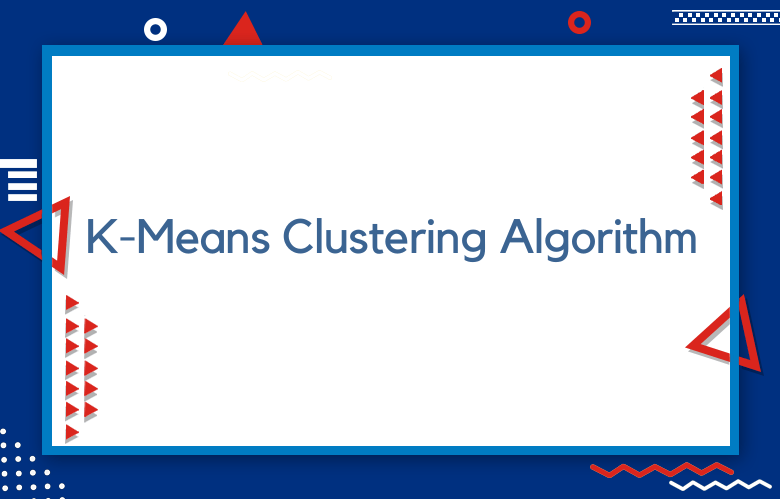Data Lineage for Marketing: Tracking Data Flow and Ensuring Accuracy

Data is the backbone of modern marketing. It is used for everything from predicting consumer behavior to measuring the effectiveness of campaigns. However, with so much data being collected from many different sources, it can take time to track where it’s coming from and where it’s going.
That’s where data lineage comes in. We’ll explore data lineage and its importance for marketing. We’ll also discuss how to track data flow and ensure accuracy so you can have confidence in your marketing data.
Data is crucial in marketing. It is the driver of insights, strategies, and actions that bring businesses closer to their goals. However, the quality of data is equally important as its quantity.
If marketers can’t rely on their data’s accuracy, completeness, and timeliness, they may make costly mistakes that could lead to missed opportunities, lost revenues, and damaged reputation.
That’s why data lineage is critical in marketing. It enables marketers to track their data’s origin, transformation, and consumption, ensuring it meets their quality standards and regulatory requirements.
We will explore the concept of data lineage for marketing and its benefits, challenges, and best practices.
What is Data Lineage for Marketing?
-
Data source: Identifying the origin of the data, including the system, tool, or process where it was first generated or captured.
-
Data transformation: Tracking how the data is transformed as it moves through different systems and processes, including any cleaning, enrichment, or manipulation that occurs along the way.
-
Data flow: Understanding how the data flows through the marketing organization, including the systems, tools, and processes it passes through and the dependencies between them.
-
Data usage: Analyzing how the data is used within the marketing organization, including the applications, reports, and dashboards that rely on it for insights and decision-making.
The Importance of Data Lineage for Marketing
Data lineage is an essential aspect of marketing that enables organizations to better understand the effectiveness of their advertising campaigns by providing a complete overview of how their data has been collected, analyzed, and utilized throughout the marketing process.
Data lineage allows businesses to perform a comprehensive audit trail, giving them complete transparency regarding their data’s origin, flow, and processing.
With data lineage, marketing teams have an end-to-end view of how data is transformed through the marketing pipeline.
In today’s highly competitive market, businesses rely heavily on their marketing strategies to succeed. However, effective marketing campaigns require accurate, reliable, and up-to-date data free from errors, inconsistencies, and duplications.
Inaccurate data can lead to misguided decisions, wasted resources, and poor campaign performance. With data lineage, marketing teams can ensure their data is clean, accurate, and error-free.
Exploring the Benefits of Data Lineage for Marketing
Improved Decision-Making
Data lineage helps marketers make better decisions by providing them with a clear understanding of where their data comes from and how it is used.
-
Improved data quality: By understanding the origins and transformation of data, marketers can identify potential issues, such as inaccuracies, inconsistencies, or gaps, and address them proactively to improve data quality.
-
Increased data trust: Data lineage helps build confidence in the data used for decision-making by clearly understanding its source, transformation, and flow throughout the organization.
-
Optimized decision-making: Data lineage ensures that data is accurate, reliable, and trustworthy, helping marketers make more informed decisions based on high-quality data.
-
Enhanced compliance: Data lineage helps marketing organizations comply with data regulations by providing a clear audit trail of data usage, transformation, and lineage.
-
Improved collaboration: Data lineage enables marketing teams to collaborate more effectively by providing a shared understanding of data sources, usage, and dependencies.
-
Reduced data silos: By tracking the flow of data through different systems and processes, data lineage helps break down data silos and enables more efficient data management and sharing.
-
Increased productivity: By automating data lineage processes, marketers can save time and resources, allowing them to focus on more strategic initiatives and drive better results.
-
Faster issue resolution: Data lineage helps identify and resolve data issues more quickly, improving marketing campaigns’ overall performance and effectiveness.
By tracing the flow of data from its source to its destination, marketers can quickly identify any discrepancies or errors that may have occurred along the way. This allows them to make more informed decisions about using their data and ensure that it is accurate and up-to-date.
Increased Efficiency
Data lineage also helps marketers increase efficiency by reducing their time on manual data analysis.
With a clear view of the data flow, marketers can quickly identify bottlenecks or areas where improvements can be made to streamline processes and improve efficiency.
Improved Data Quality
Data lineage helps marketers ensure that their data is of high quality by providing visibility into how it is used throughout the organization.
By tracing the path of each piece of data, marketers can quickly identify any potential issues or inconsistencies in how it is being used or processed, allowing them to take corrective action if necessary.
Improved Audibility
Data lineage also makes it easier for marketers to audit their data usage and ensure compliance with regulations such as GDPR or CCPA. With a clear view of all the steps in processing customer data, marketers can quickly identify potential risks and take appropriate measures to address them.
Reduced Risk
Data lineage helps reduce risk by ensuring customer data is handled securely throughout its lifecycle.
By tracing each step in the process, marketers can quickly detect any potential security issues or unauthorized access attempts, allowing them to take corrective action before a breach occurs.
Enhanced Analytics Capabilities
Data lineage provides enhanced analytics capabilities by giving marketers an end-to-end view of their customer journey and how different pieces of data are related to one another over time.
This allows them to gain valuable insights into customer behavior and develop more effective marketing strategies accordingly.
Greater Transparency
Data lineage also provides greater transparency by making it easier for customers to understand how their personal information is used and shared with third parties across different channels and platforms.
This gives customers more control over their privacy while also helping organizations build trust through increased transparency around how they use customer information for marketing purposes.
Improved Customer Experiences
Data lineage helps organizations create better customer experiences by providing an end-to-end view of every interaction they have had with a customer over time across multiple channels and platforms.
This allows organizations to understand each customer’s needs and preferences better to deliver personalized experiences tailored specifically for them.
Improved Compliance
Data lineage is a critical tool for marketing teams, as it helps to ensure that data is collected and used in compliance with applicable regulations.
Data lineage can help marketers track each piece of data’s origin, making it easier to identify and address potential compliance issues quickly. This can be especially important when dealing with sensitive customer data or when working with third-party vendors.
Increased Efficiency
Data lineage can also help make marketing processes more efficient by identifying where data comes from and how it’s being used. By understanding the data flows within an organization, marketers can quickly identify areas where processes could be improved or automated, resulting in increased efficiency and cost savings.
Better Decision-Making
Tracing the origin of each piece of data allows marketers to make better decisions about how they use it. For example, if a marketer knows that specific customer data was collected from a particular website, they can use that information to target their campaigns more effectively.
By understanding how different pieces of data are connected, marketers can gain valuable insights into customer behavior and preferences.
Improved Data Quality
Data lineage tools also help improve the quality of the data marketers have access to by allowing them to quickly identify errors or inconsistencies in their datasets.
This makes it easier for marketers to ensure their data is accurate and up-to-date, essential for producing effective campaigns and strategies.
Enhanced Security & Privacy
Data lineage tools also provide enhanced security and privacy for customers’ personal information by ensuring that all customer data is appropriately tracked and stored under applicable laws and regulations.
Organizations can better protect their customers’ privacy rights while providing targeted services and products that meet their needs by having detailed records of customer data collected, stored, used, and shared.
Reduced Risk & Liability
Having detailed records of how customer data is handled helps organizations reduce liability risk in case of a breach or other incident involving customer information.
By tracing the source of each piece of information and who had access to it at any given time, organizations can better understand where potential risks lie and take steps to mitigate them before an incident occurs.
Improved Audibility
Data lineage tools also make it easier for organizations to audit their processes for collecting, storing, using, and sharing customer information by providing detailed records for each step in the process.
This makes it simpler for auditors or regulators to verify an organization’s compliance with applicable laws or regulations while also allowing them to quickly identify areas where improvements could be made or risks minimized going forward.
Easier Collaboration
Data lineage tools make it easier for marketing teams within an Organization and external partners such as agencies or vendors to collaborate on projects related to collecting, storing, using, and sharing customer information.
By having visibility into internal processes and those used by external partners, teams can work together more effectively while maintaining control over their operations.
Best Practices for Implementing Data Lineage in Marketing
Data lineage is a crucial aspect of any organization’s marketing strategy. It involves tracing the data lifecycle and understanding its origins, transformations, and destinations.
With the increasing emphasis on data-driven decision-making in marketing, ensuring that data lineage is implemented effectively is more critical than ever.
Here are some best practices that can be used to implement data lineage in marketing:
Clearly Define Data Lineage
Clarifying what data lineage means within the marketing context is essential before implementing it. Develop a shared understanding of data lineage and its use in the marketing department.
Select the Appropriate Tools
There are many tools available for data lineage tracing. Many of these tools are designed to handle different data types, volumes, and lineage complexity. Marketing teams should choose the appropriate tool to manage their specific requirements.
Develop a Data Lineage Strategy
Marketing teams should develop a data lineage strategy that outlines the steps that will be taken to ensure all data is tracked throughout the marketing process. This strategy may outline who will track data lineage, how often it will be followed, and what tools will be used.
Document Data Transformations
It is essential to document data transformations throughout the marketing process. This documentation should include the data’s original state, where, and how it was transformed.
Use Version Control
Using version control to manage data throughout the marketing process is essential. This ensures that any changes made to the data are evident and all data remains transparent throughout the process.
Ensure Data Security
Data security is paramount in the marketing world. It is essential to ensure that data is protected throughout its lifecycle and that only authorized personnel can access it.
In conclusion, implementing data lineage in marketing is a vital aspect of managing data throughout its lifecycle. With the right tools, strategy, documentation, version control, and data security, marketers can ensure that they are making data-driven decisions based on reliable and transparent data.
How Data Lineage Enhances Marketing Strategies
Data lineage is a process in which information is traced back to its origin and is followed through its journey across various systems, applications, and procedures.
In marketing, data lineage is an essential tool that helps businesses gain insights into their customers’ behavior, preferences, and interests. This information, in turn, enhances their marketing strategies.
In today’s data-driven world, businesses have access to vast amounts of customer data, which, if analyzed correctly, provides insights that can drive marketing strategies.
However, the accuracy and consistency of this data have always been a challenge, which is where data lineage plays a crucial role.
Data Lineage: A Key Component for Marketing Success
Data lineage plays a significant role in the success of marketing campaigns. It enables marketers to understand where the data comes from, how it is processed, and how it is utilized to gain insights and improve business performance.
With data lineage, marketing teams can trace the origin of their data and ensure that it is accurate and reliable. This is crucial in creating targeted and personalized marketing strategies that resonate with the audience.
Moreover, data lineage allows marketers to identify and fix data quality issues. Data quality can lead to accurate insights and misguided marketing decisions. By tracing the origin of the data, marketers can determine where the problems arise and take corrective actions to improve the quality of the data.
Understanding the Process of Data Lineage for Marketing
Data lineage is a crucial aspect of modern marketing that can help organizations track and better understand their data assets. It is the process of tracing the data flow from its origin to its destination, including any transformations or modifications that may occur along the way.
This process is becoming increasingly important in marketing due to the rapid growth of data-driven approaches.
Marketers rely heavily on data to make more informed decisions and drive results in today’s business landscape. However, how can they be sure they are using the correct data or that the insights they draw from it are accurate?
Key Factors to Consider in Data Lineage for Marketing
Data lineage is essential to any marketing strategy, providing transparency and accountability in data collection and analysis.
It involves tracking the origin, flow, and transformation of data from its source to its final destination, ensuring that all data used in marketing campaigns is accurate, reliable, and trustworthy.
To ensure effective and meaningful data lineage in marketing, there are several key factors that marketers need to consider, including:
Data Quality
Ensuring high-quality data is critical in any marketing campaign. Data should be accurate, complete, relevant, and timely to meet the campaign’s needs. Data lineage helps marketers identify the source of data, eliminate duplicates, and verify the accuracy of the data.
Data Governance
Data governance policies, practices, and processes are critical to the success of data lineage and should, therefore, be strictly followed. Good data governance ensures that data is reliable, compliant with privacy regulations, and securely managed.
Data Integration
Data integration is essential to ensure that data from multiple sources can be consolidated and used to provide meaningful insights. Data lineage helps marketers track data flow across various platforms and identify areas where data integration is required.
Data Traceability
Data lineage helps marketers trace the origin of data, identify its processing, and understand how it’s used. This allows marketers to identify potential discrepancies and inconsistencies that can affect the quality of marketing campaigns.
Data Security
Data security is crucial to ensure data privacy, confidentiality, and compliance with regulatory requirements. Data lineage helps marketers identify areas where data security needs to be improved and provides an audit trail of data access and usage.
Technology
Technology plays a significant role in data lineage, enabling marketers to track data across various systems, platforms, and applications.
Technologies such as blockchain and artificial intelligence can help to enhance the accuracy, traceability, and reliability of data lineage in marketing.
In conclusion, influential data lineage is critical in marketing, as it provides transparency and accountability and enhances the overall quality of marketing campaigns.
By considering these key factors, marketers can ensure that their data lineage practices are effective, efficient, and aligned with their strategic marketing goals.
Data Lineage Techniques for Marketing Professionals
Data lineage techniques for marketing professionals have become increasingly essential to tracking the data journey. In today’s digital era, marketing professionals have access to an enormous amount of data that can be used to optimize campaigns, drive revenue, and build positive customer relationships.
However, with this vast amount of data, it can be challenging to determine the source, transformation, and movement of data.
Therefore, data lineage techniques have become a crucial solution for marketing professionals. These techniques thoroughly understand where data originates, how it was transformed, and where it has moved throughout various stages of the data life cycle.
With data lineage, marketing professionals can easily track the data journey from a specific customer interaction to the outcome.
Challenges and Solutions in Implementing Data Lineage for Marketing
Data lineage is an integral aspect of any data management system. It refers to tracking and documenting the data lifecycle, including its origin, transformation, and utilization.
In marketing, data lineage is essential for tracking customer behavior, measuring the effectiveness of marketing campaigns, and ensuring regulatory compliance.
However, implementing data lineage in marketing faces various challenges that must be addressed.
One significant challenge in implementing data lineage for marketing is data silos. Many organizations store data in separate systems, resulting in fragmented data sets that are difficult to trace.
Consequently, it is crucial to integrate different data systems into a centralized data warehouse that provides a comprehensive view of an organization’s data.
Data Lineage Tools and Resources for Marketing Optimization
Google Analytics
Google Analytics is one of the most popular data lineage tools and resources for marketing optimization. This tool allows marketers to track website performance, identify user behavior, and measure the effectiveness of campaigns.
It also provides detailed insights into data sources such as web traffic, page views, and conversions. By leveraging this data, marketers can optimize their campaigns to maximize ROI.
Adobe Analytics
Adobe Analytics is a powerful analytics platform that helps marketers understand customer behavior across multiple channels. This tool gives marketers insights into website performance, customer journey mapping, attribution modeling, and more.
Adobe Analytics integrates with other Adobe products, such as Adobe Experience Cloud and Adobe Advertising Cloud, to provide a comprehensive view of customer engagement across all channels.
Tableau
Tableau is an analytics platform that helps marketers visualize data to gain insights into customer behavior and campaign performance. Through Tableau’s drag-and-drop interface, marketers can create interactive dashboards that provide real-time insights into customer journeys and campaigns.
Tableau integrates with other platforms, such as Salesforce and Microsoft Power BI, for a more comprehensive view of data sources.
IBM Watson
IBM Watson is an AI-powered analytics platform that helps marketers understand customer behavior through predictive analytics. This tool uses machine learning algorithms to identify patterns in customer data, such as purchase history or web browsing habits, to make predictions about future purchases or behaviors.
By leveraging these insights, marketers can create more targeted campaigns that are better tailored to their customers’ needs and preferences.
Mixpanel
Mixpanel is an analytics platform designed specifically for mobile apps and websites that enables marketers to monitor user activity in real-time.
Through Mixpanel’s dashboard interface, marketers can track metrics such as app downloads, page views per session, user engagement levels over time, and more to optimize their campaigns for maximum ROI on mobile platforms.
Heap
Heap is an analytics platform designed specifically for web applications that enable marketers to track website user actions in real time without any manual instrumentation from developers or IT staff members.
This tool provides detailed insights into user interactions with websites, including mouse movements, clicks, taps, scrolls, pageviews, form submissions, searches, downloads, video plays, etc., enabling marketers to understand better how users interact with their sites and to optimize them accordingly.
Hotjar
Hotjar is another web analytics platform designed specifically for website optimization. This tool uses heatmaps and recordings of actual user sessions on websites to identify areas where users may encounter issues or have difficulty navigating pages. With this information, companies can make changes quickly to improve the overall experience of visiting their site.
Segment
Segment is a cloud-based solution that enables companies to collect data from multiple sources—such as apps, websites, and CRM systems—into one centralized location. Once the data has been collected, marketing teams can use it for analysis purposes or send it directly to third-party applications like email marketing software or ad networks.
Using Segment’s unified API structure, companies can quickly connect different services while ensuring security compliance measures are met.
Conclusion
In conclusion, data lineage is essential for ensuring data accuracy, consistency, and reliability. For marketers, it is particularly critical for making informed decisions about campaigns, channels, and resource allocation. By tracking data lineage, you can identify and address any errors or inconsistencies in your data, allowing you to make confident decisions.
There are several approaches to monitoring data lineage, from automated tools to manual tracking, and it’s up to each organization to determine the best method for their needs. Regardless of the system, implementing processes and procedures to ensure data accuracy and validate data sets is critical to getting the most out of your data.
Data lineage is pivotal in ensuring data quality and governance in marketing. By tracing data’s origins, transformations, and destinations, marketers can validate their data’s accuracy, completeness, and relevance, enabling them to make informed decisions and actions that drive their business success.
However, marketers need to be aware of data lineage’s challenges and best practices and implement them to maximize its benefits while mitigating risks. By doing so, marketers can build a strong data foundation that fuels their marketing strategies and initiatives and delivers value to their customers and stakeholders.
Call: +91 9848321284
Email: [email protected]



